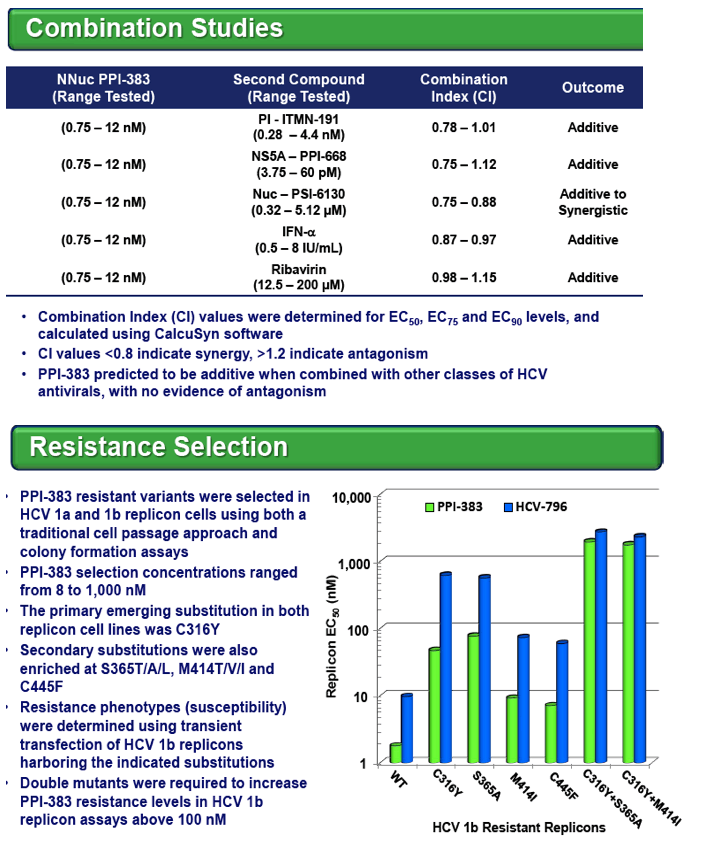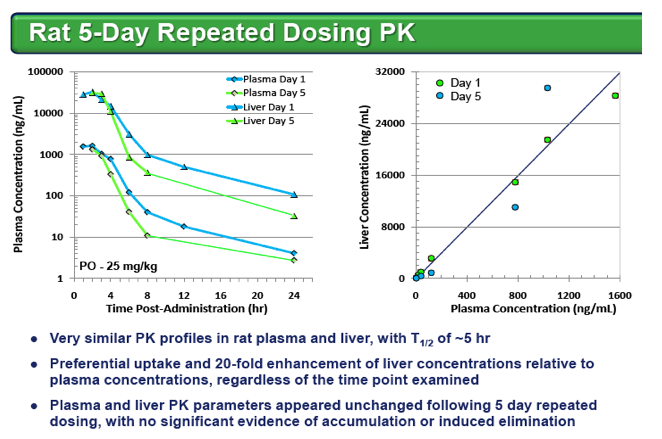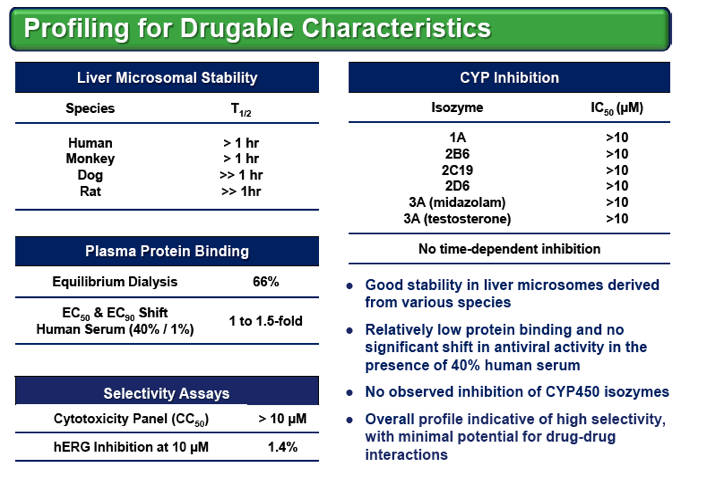 |
 |
 |
| |
IDENTIFICATION AND CHARACTERIZATION OF PPI-383, A NEXT GENERATION HCV NS5BNON-NUCLEOSIDE INHIBITOR WITH POTENT ACTIVITY AGAINST ALL MAJORHCV GENOTYPES
|
| |
| |
Reported by Jules Levin EASL 2012 Apr 18-22 Barcelona Spain
R.J. Colonno, N. Huang, M. Lau, Q. Huang, A. Huq, E. Peng, M. Bencsik, M. Zhong and L. LiPresidio Pharmaceuticals, San Francisco, CA, USA

ABSTRACT
Background: Future HCV combination therapies will optimally be efficacious against all of the major HCV genotypes. NS5B polymerase-targeted nucleosides and NS5A inhibitors have broad genotype efficacy, but protease inhibitors (PIs) and non-nucleosidic (NNuc) NS5B inhibitors have predominantly been HCV genotype-1 specific. We report the discovery and preclinical profile of PPI-383, a novel NS5B NNuc inhibitor with activity against all major HCV genotypes.
Methods: Antiviral potency, combination and resistance studies utilized standard HCV replicon systems. HCV spectrum studies beyond genotype 1a and 1b employed stable cell lines harboring 1b replicons with insertion of the NS5B gene segments from other HCV genotypes (2a, 3a and 4a). Pharmacokinetic studies utilized IV and PO administration of PPI-383 in rats, monkeys and dogs.
Results: PPI-383, identified through an extensive medicinal chemistry effort, exhibits EC50s of 8.3 and 2.2 nM in HCV 1a and 1b replicon assays, respectively. Antiviral activity (EC50s of 4.4-11.7 nM) is maintained against other major HCV genotypes (2a, 3a and 4a) in stable replicon cell assays. Cellular cytotoxicity (CC50) levels are >10 μM in several cell lines and no inhibitory activity is observed against other viruses (including BVDV) at 10 μM. PPI-383 is additive to synergistic (CIs 0.75-1.15) when combined with IFN, ribavirin, and HCV-specific NS3 protease, NS5B nucleoside and NS5A inhibitors. Resistance studies showed that variants with decreased susceptibility could be generated, with the highest resistance levels encoded by the primary substitution C316Y in both genotype 1a and 1b, consistent with inhibitors targeting the NS5B Palm-II binding site. PPI-383 shows good stability in liver microsomes and no significant inhibition against CYP450 isozymes. PPI-383 exhibits relatively low protein binding (66%), no inhibition in the hERG assay at 10 μM, and good oral bioavailability in rats, monkeys and dogs, with plasma half-lives suggestive of potential once or twice daily dosing in humans.
Conclusion: The HCV NS5B polymerase protein plays a critical role in the HCV viral replicative cycle and is an attractive target for antiviral intervention. PPI-383 is a newly discovered selective and potent NS5B NNuc inhibitor with pan-genotypic activity and a preclinical profile supportive of advancement into clinical trials.







|
| |
|
 |
 |
|
|